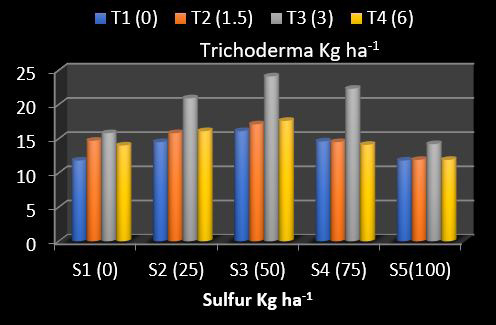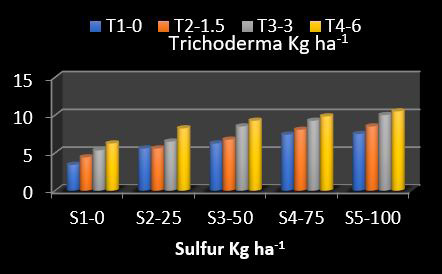Effect of Trichoderma Applied with Different Sulfur Levels on Yield and Sulfur Uptake by Onion (Allium cepa L.)
Effect of Trichoderma Applied with Different Sulfur Levels on Yield and Sulfur Uptake by Onion (Allium cepa L.)
Faheem Akbar1, Naveed Ahmed4*, Maria Mussarat1, Imtiaz Ahmed4, Dost Muhammad1, Toseef Ahmad2, Muhammad Afaq Akbar1, Shehryar Rafique3, Seemab Ali4, Sohail Aslam4, Basharat Hussain Shah4, Fayaz Ahmad4 and Muhammad Abbas Khan4
Plant height (cm) as affected by trichoderma and sulfur interaction.
Bulb diameter (mm) as affected by trichoderma and sulfur interaction.
Single bulb weight (g) as affected by trichoderma and sulfur interaction.
Number of leaves as affected by trichoderma and sulfur interaction.
Leaf length (cm) as affected by trichoderma and sulfur interaction.
Sulfur content (%) in onion bulb as affected by trichoderma and sulfur interaction.
Sulfur content in soil (%) as affected by trichoderma and sulfur interaction.
Phosphorous content in soil as affected by trichoderma and sulfur interaction.
Phosphorus concentration (%) as affected by trichoderma and sulfur interaction.
Yield ton ha-1 as affected by trichoderma and sulfur interaction.

















